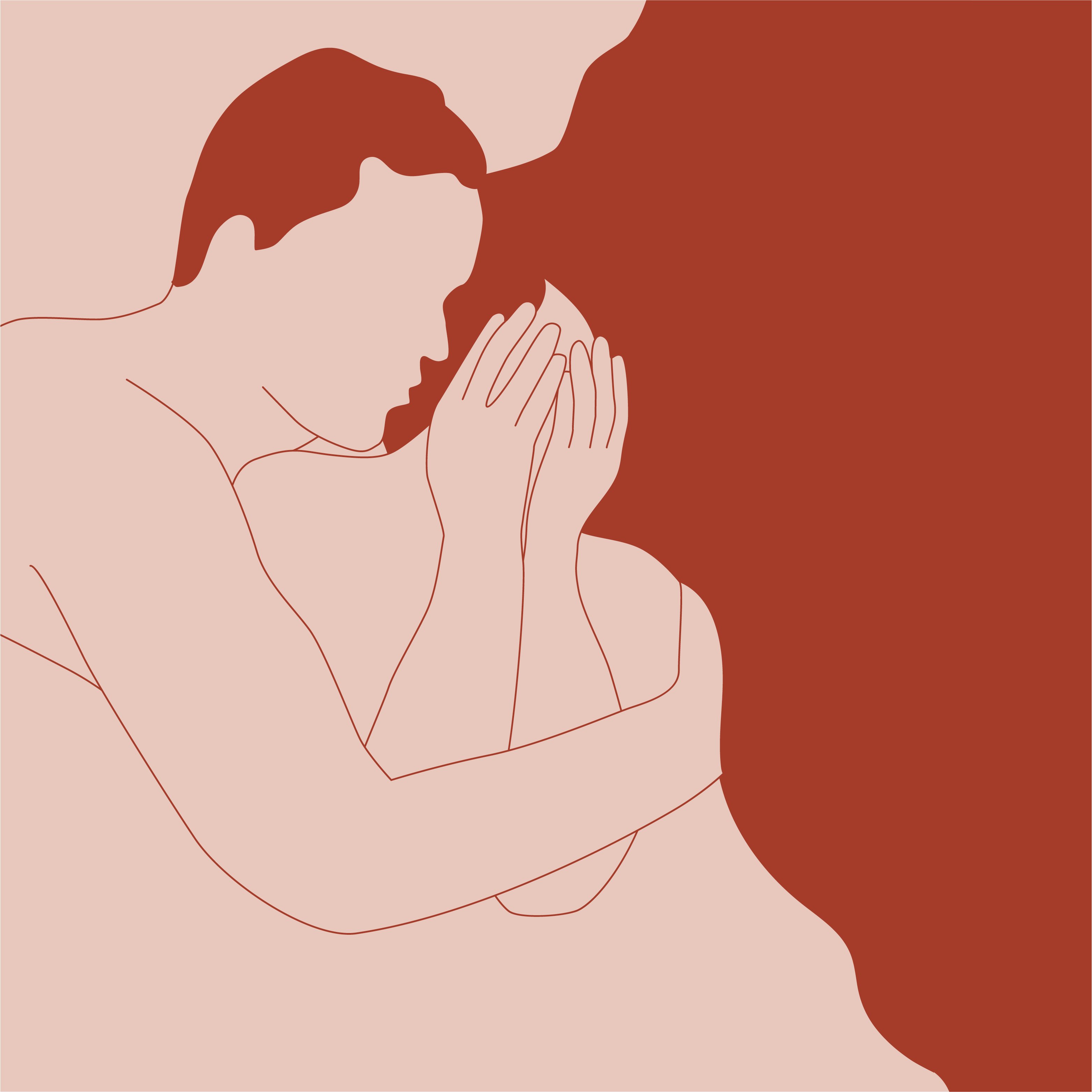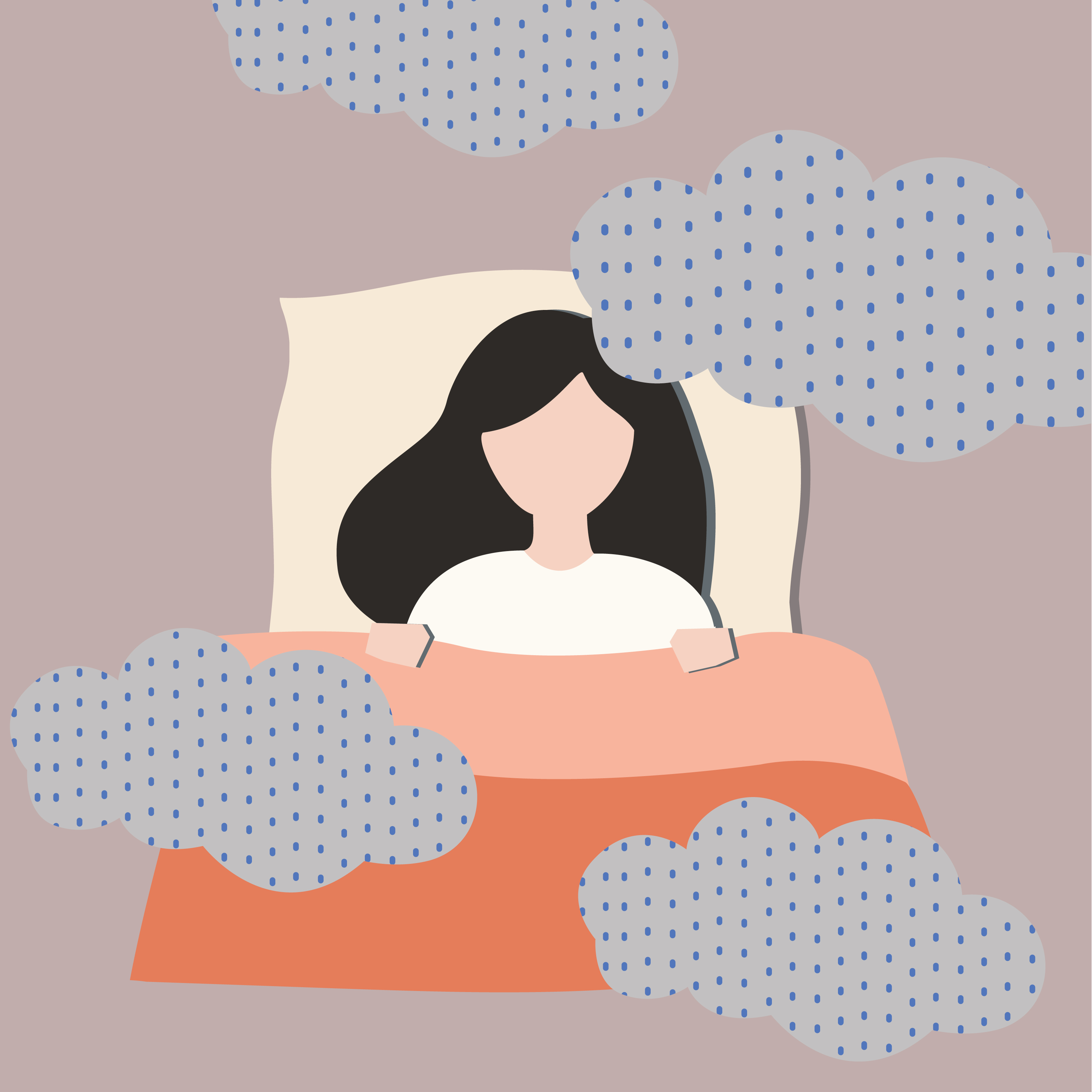Nov 05, 2021
THE FOUR STAGES OF YOUR CYCLE EXPLAINED BY AN EXPERT
I was about 23 years old when I learnt that every single day I am at one point or another in my menstrual cycle. That sounds pretty late to be learning this, but many adults don’t realise that ‘period’ and ‘menstrual cycle’ mean different things.
Periods last for 4-7 days on average, but every other day you’re not bleeding is just as important. Whereas, the menstrual cycle is the entire time between the start of one period bleed, and the beginning of your next bleed.
Yep! That means every day of your life! Unless of course, you’re on hormonal birth control, pregnant, have finished menopause, or haven’t had your first period.
Let me explain these four phases of the menstrual cycle, and importantly, talk through how food and nutrition, as well as energy and exercise work in each phase. The result? You’ll feel more empowered to work with your cycle to help you feel your absolute best.
The Four Phases of the Menstrual Cycle
- The menstrual phase – This is your period bleed
- The follicular phase – The phase before ovulation
- The ovulation phase – Ovulation is when an ovary releases an egg
- The luteal phase – The phase after ovulation
To note: If someone is using a form of hormonal contraception that stops ovulation, then they are not cycling through these 4 phases.
Our levels of hormones are very different in each phase, causing us to feel different physically, mentally and emotionally when we move from one phase to the next. This is why we can feel fabulous and full of energy one week, and not want to get out of bed the next.
Wanna hear the good news? Well, now that you know this, you can work with these changes rather than against them. When you know which phase you’re in and how to expect to feel, then you can use it to your advantage.
Exercise & energy in the cycle phases
Regular movement throughout the cycle has been shown to improve period and PMS symptoms. It’s very helpful to keep your body moving throughout the entire menstrual cycle, but you don’t have to put pressure on yourself to perform at your best every single week. It can be helpful to adapt your movement routine to accommodate for what cycle phase you’re in.
MENSTRUAL PHASE – EXERCISE AND ENERGY
Some people tend to feel a decline in energy on their period because of the sudden drop in hormones that signals our period to start. You may not feel like exercising at this time, especially if you’re someone who experiences period pain and other period symptoms. Listen to your body. If it’s asking you to rest, then rest!
Other people may feel energised on their period and experience far less symptoms. If you’re feeling up for exercise on your period, it’s a great way to feel good physically and mentally.
If you still want to incorporate some movement into your day on your period, here are some types of movement best suited to this phase:
- Walking
- Yoga
- Pilates
- Tai Chi
- Slower or lower intensity exercise
Using a period cup while exercising on your period is very helpful and convenient. Personally, I love wearing my cup while running because it stays in place and I can’t even feel it. Another advantage is that I don’t need to change it when I’m finished with my workout – I can keep it in until the 8 hours of wear-time is up. You can also wear period briefs while working out because they move with you, just like normal underwear. On heavy flow days you could pair the briefs with a tampon or period cup for extra protection against leaks.
FOLLICULAR PHASE – EXERCISE AND ENERGY
The follicular phase is my personal favorite phase. After our period bleed is finished the follicular phase hormones help us to feel our best, with no period or PMS symptoms to deal with. Rising oestrogen and testosterone levels increase our energy, making it a great time to work out.
In the follicular phase we can also exercise for longer before reaching a point of exhaustion. This means you can usually exercise at a higher intensity for longer. You might even be able to reach your personal bests in this phase.
Types of movement suited to this phase:
- Higher intensity workouts
- Weight training
- HIIT
- Resistance training
- Running and other forms of aerobic exercise
OVULATION PHASE – EXERCISE AND ENERGY
In the ovulation phase our testosterone is at its highest. This gives us a boost of energy in this phase, making it a great time to increase the intensity, duration and/or frequency of our exercise. We may also notice an increase in motivation to exercise.
Utilising the energy you may have in the ovulation phase to move your body can help you to feel better later on in your cycle.
Types of movement suited to this phase:
- Higher intensity workouts
- Weight training
- HIIT
- Resistance training
- Running and other forms of aerobic exercise
LUTEAL PHASE – EXERCISE AND ENERGY
In the luteal phase our oestrogen levels drop significantly and our progesterone levels rise… well, they’re supposed to, but many people experience lower levels of progesterone. This can bring about PMS symptoms.
With this hormonal change, some people may find they have less energy than before. When you add PMS symptoms such as bloating, sore boobs, a sore back and tiredness into the mix, you may feel less motivated to move your body. It’s important to listen to how our body feels and not push ourselves too hard. You can lower the frequency, duration and/or intensity of your exercise to adapt to these changes of the follicular phase.
Types of movement suited to this phase:
- Lower intensity/duration strength training
- Walking
- Yoga
- Pilates
Food in the cycle phases
The food we fuel our body with has a big impact on our period hormones. Happy and well balanced hormones will allow us to have regular periods with less period pain and less PMS symptoms.
MENSTRUAL PHASE – FOOD AND NUTRITION
We might feel more hungry and have more food cravings during the menstrual phase. Turning to our favorite foods to make us feel better while we’re dealing with period symptoms can be a learned response (a habit). This is something that’s helpful to be aware of if you’re someone who has associated food with reward or comfort throughout your life.
You can still maintain a diet that supports healthy hormones while on your period. Try to curb your craving in a healthier way with homemade versions of the food you are craving. In your home-made recipes you can use whole food ingredients, and a balance of protein, carbs and healthy fats. In your recipes you can also minimise refined sugar.
For example:
- Craving a chocolate bar? You can make a protein ball with dates, nuts, seeds and cacao powder.
- Craving ice cream? You can make frozen banana ice cream and top it with magnesium and zinc rich pumpkin seeds, cacao nibs and nuts.
- Take some self-care time to eat your home-made treat and chill on the couch in cosy PJs and TOM Organic period briefs. Self care in this phase is so important!
FOLLICULAR PHASE & OVULATION PHASE – FOOD AND NUTRITION
In the follicular phase and ovulation phase we usually have a more stable appetite and less food cravings. You can take advantage of this and focus on eating beautiful, hormone-supporting foods in this phase.
Foods to eat for balanced hormones:
- Eat foods high in omega 3 to prevent period pain. This includes walnuts, chia seeds, hemp seeds, fatty fish, and flaxseed.
- Eat magnesium rich foods or take a supplement. Magnesium can relax muscles, help with period pain, and prevent PMS soreness in the legs and back. Magnesium rich foods include dark leafy greens, cacao, cashews, quinoa, black beans, almonds and pumpkin seeds
- Eat more fibre from vegetables, wholegrains, nuts and seeds. Fibre helps maintain balanced hormones and eliminate extra oestrogen from the body. Veggies also contain loads of vitamins and nutrients for overall health.
- Eat cruciferous vegetables. This includes cauliflower, broccoli, cabbage, brussel sprouts and bok choy. These help support the liver to metabolise your body’s oestrogen
- Think about your sugar intake. High levels of sugar intake can impact blood sugar levels which is closely tied to our ovaries’ production of hormones, and the body’s ability to eliminate unneeded hormones.
- Balance your meals by including a source of carbohydrates, healthy omega 3 fats and protein. This will also help you feel full for longer.
LUTEAL PHASE – FOOD AND NUTRITION
In this phase we might experience food cravings or an increased appetite. This can be because of lower levels of serotonin, which is a hormone that works to stabilise appetite.
It’s ok to have food cravings, it’s just another way your body may be trying to communicate with you. Maybe it’s letting you know you need more rest, more veggies, or that it needs to slow down.
It’s not uncommon to crave sugar and fast food in the luteal phase. However, in the long run these foods can fuel PMS symptoms and period pain. You can help prevent future cravings by eating foods high in magnesium and zinc, which includes green veggies, quinoa, pumpkin seeds, or even taking a supplement under the guidance of a practitioner.
Now that you know what to expect in each phase, you can work with the changes rather than fighting against them. Ultimately, by supporting your body with what it needs in each phase you will be able to use your menstrual cycle to your advantage and feel your best.
Demi Spaccavento is the founder of Bright Girl Health school programs, a women’s health educator, author and high school teacher. She has presented Bright Girl Health programs to thousands of students across NSW Australia, helping them to be in tune with their body and never have to dread their period again. Demi has no filter when it comes to talking about periods and believes that we should never be kept in the dark about our own bodies. She believes that the menstrual cycle does not have to be your enemy – it can be your greatest tool for better health and wellbeing!
Website for school programs: www.brightgirlhealth.com
Instagram: @brightgirlhealth
Facebook: www.facebook.com/brightgirlhealth
Youtube: www.youtube.com/brightgirlhealth
Blogs

Jun 08, 2022
EXPLORING PERIOD CARE IN CULTURES AROUND THE WORLD
Our TOM Talks panelist Sabina McKenna explores how different cultures around the world approach period care.
Read More
Jun 08, 2022
STOP APOLOGISING FOR HAVING YOUR PERIOD
Our TOM Talks panelist Mel Mason talks about the importance of not apologising for having your period.
Read More
Jun 07, 2022
STRESSED? NOT SLEEPING? TRYING TO CONCEIVE?
TOM Talk's panelist Georgia Hartmann discussed the links between stress, sleep and fertility.
Read More
Jun 07, 2022
STRESS AND HOW IT AFFECTS YOUR SEX DRIVE
Certified sex coach Georgia Grace is here to unpack the link between stress and sex.
Read More